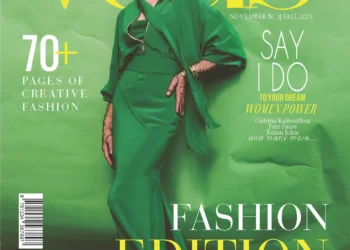Table of Contents
- Introduction
- Exploring the History of the Most Iconic Fashion Labels
- The Rise of Sustainable Fashion Labels
- The Impact of Social Media on Fashion Labels
- The Influence of Streetwear on Fashion Labels
- The Power of Collaborations Between Fashion Labels
- The Role of Technology in the Fashion Labels Industry
- The Impact of Celebrity Endorsements on Fashion Labels
- The Role of Influencers in Promoting Fashion Labels
- The Future of Fashion Labels in the Digital Age
- The Benefits of Shopping at Independent Fashion Labels
- Conclusion
«Explore the Latest Trends with Discover the World of Fashion Labels!»
Introduction
Welcome to Discover the World of Fashion Labels! Here, you can explore the world of fashion labels and learn about the history, trends, and styles of some of the most iconic fashion labels. From the classic Chanel to the modern Balmain, you can discover the stories behind the labels and find out what makes them so special. Whether you’re a fashion enthusiast or just curious about the world of fashion labels, this is the perfect place to start. So, let’s dive in and explore the world of fashion labels!
Exploring the History of the Most Iconic Fashion Labels
Fashion is an ever-evolving industry that has been around for centuries. Throughout the years, certain fashion labels have become iconic and have left a lasting impression on the industry. From Chanel to Gucci, these labels have become synonymous with luxury and style. In this article, we will explore the history of some of the most iconic fashion labels in the world.
Chanel is one of the most iconic fashion labels in the world. Founded in 1909 by Coco Chanel, the brand has become synonymous with luxury and sophistication. Chanel is known for its classic designs, such as the iconic little black dress and the quilted handbag. The brand has also been credited with popularizing the use of jersey fabric and introducing the concept of the “costume jewelry”.
Gucci is another iconic fashion label that has been around since 1921. Founded by Guccio Gucci, the brand is known for its luxurious and timeless designs. Gucci is credited with popularizing the use of the double G logo and the signature green and red stripes. The brand is also known for its iconic handbags, such as the Bamboo bag and the Jackie O bag.
Louis Vuitton is another iconic fashion label that has been around since 1854. Founded by Louis Vuitton, the brand is known for its luxurious and timeless designs. Louis Vuitton is credited with popularizing the use of the signature LV monogram and the iconic Speedy bag. The brand is also known for its iconic trunks, which were originally designed to transport luggage.
Prada is another iconic fashion label that has been around since 1913. Founded by Mario Prada, the brand is known for its luxurious and timeless designs. Prada is credited with popularizing the use of the signature triangle logo and the iconic nylon bag. The brand is also known for its iconic shoes, such as the Mary Jane and the slingback.
These iconic fashion labels have left a lasting impression on the fashion industry and have become synonymous with luxury and style. From Chanel to Gucci, these labels have become iconic and have helped shape the fashion industry as we know it today.
The Rise of Sustainable Fashion Labels
The fashion industry is one of the most polluting industries in the world, with an estimated 10% of global carbon emissions coming from the production of clothing. In recent years, however, there has been a growing trend towards sustainable fashion labels, which are committed to reducing their environmental impact.
Sustainable fashion labels are committed to using materials and processes that are more environmentally friendly. This includes using natural materials such as organic cotton, hemp, and bamboo, as well as recycled materials such as plastic bottles and old clothing. They also strive to reduce their water and energy consumption, and to use fewer chemicals in their production processes.
These labels are also committed to ethical production practices, such as fair wages and safe working conditions. They are often transparent about their production processes, and many have adopted a “slow fashion” approach, which focuses on quality over quantity.
The rise of sustainable fashion labels has been driven by consumer demand. As more people become aware of the environmental and social impacts of the fashion industry, they are increasingly looking for brands that are committed to sustainability. This has led to a surge in the number of sustainable fashion labels, with many major fashion brands now offering sustainable collections.
The rise of sustainable fashion labels is also being driven by technology. Advances in technology have made it easier for sustainable fashion labels to produce clothing in a more efficient and sustainable way. This has allowed them to reduce their environmental impact while still producing high-quality clothing.
The rise of sustainable fashion labels is a positive development for the fashion industry, and for the environment. By reducing their environmental impact, these labels are helping to create a more sustainable future for the fashion industry.
The Impact of Social Media on Fashion Labels
The impact of social media on fashion labels has been immense. In the past, fashion labels relied on traditional marketing methods such as print ads, television commercials, and billboards to reach their target audience. However, with the rise of social media, fashion labels have been able to reach a much larger audience and engage with them in a more meaningful way.
Social media has allowed fashion labels to create a more personal connection with their customers. Through platforms such as Instagram, Twitter, and Facebook, fashion labels can share their latest collections, post behind-the-scenes photos, and interact with their customers in real-time. This has allowed fashion labels to build a loyal customer base and create a sense of community around their brand.
Social media has also allowed fashion labels to reach a much wider audience. Through platforms such as Instagram, fashion labels can target potential customers based on their interests and demographics. This has allowed fashion labels to reach a much larger audience than they would have been able to reach through traditional marketing methods.
Finally, social media has allowed fashion labels to gain valuable insights into their customers. Through platforms such as Instagram, fashion labels can track the engagement of their posts and gain insights into what their customers like and don’t like. This has allowed fashion labels to tailor their collections and marketing campaigns to better meet the needs of their customers.
Overall, the impact of social media on fashion labels has been immense. Through platforms such as Instagram, Twitter, and Facebook, fashion labels have been able to reach a much larger audience, create a more personal connection with their customers, and gain valuable insights into their customers’ preferences. As a result, social media has become an essential tool for fashion labels to reach their target audience and build a loyal customer base.
The Influence of Streetwear on Fashion Labels
Streetwear has had a significant influence on fashion labels in recent years. This influence has been seen in the way that fashion labels have adopted streetwear elements into their designs, as well as in the way that streetwear has become a major trend in the fashion industry.
The influence of streetwear on fashion labels can be seen in the way that fashion labels have adopted streetwear elements into their designs. Streetwear has become increasingly popular in recent years, and fashion labels have responded by incorporating streetwear elements into their designs. This includes the use of bold colors, oversized silhouettes, and graphic prints. Additionally, fashion labels have also adopted streetwear trends such as the use of logos and branding, as well as the use of streetwear-inspired materials such as denim and canvas.
The influence of streetwear on fashion labels can also be seen in the way that streetwear has become a major trend in the fashion industry. Streetwear has become increasingly popular in recent years, and fashion labels have responded by creating collections that are inspired by streetwear. This includes the use of bold colors, oversized silhouettes, and graphic prints, as well as the use of streetwear-inspired materials such as denim and canvas. Additionally, fashion labels have also adopted streetwear trends such as the use of logos and branding.
Overall, streetwear has had a significant influence on fashion labels in recent years. Fashion labels have adopted streetwear elements into their designs, as well as creating collections that are inspired by streetwear. This has resulted in streetwear becoming a major trend in the fashion industry, and has had a significant impact on the way that fashion labels design and produce their collections.
The Power of Collaborations Between Fashion Labels

Collaborations between fashion labels have become increasingly popular in recent years, and for good reason. By joining forces, fashion labels can create unique and innovative products that appeal to a wider range of customers. Collaborations also allow fashion labels to tap into each other’s resources, such as design talent, production capabilities, and marketing strategies.
One of the most successful collaborations in recent years was between the luxury fashion house Louis Vuitton and the streetwear label Supreme. The collaboration was a huge success, with the limited-edition products selling out almost immediately. The collaboration was so successful because it combined the high-end luxury of Louis Vuitton with the streetwear aesthetic of Supreme. This allowed the two labels to reach a wider audience and create products that appealed to both luxury and streetwear fans.
Collaborations between fashion labels can also be used to create unique and innovative products. For example, the collaboration between Nike and Off-White created a line of shoes that combined Nike’s iconic sneaker designs with Off-White’s signature streetwear aesthetic. The collaboration was a huge success, with the shoes selling out almost immediately.
Collaborations between fashion labels can also be used to create unique marketing campaigns. For example, the collaboration between Gucci and Balenciaga created a series of videos that featured both labels’ products. The videos were a huge success, with the campaign reaching millions of people and creating a buzz around both labels.
Collaborations between fashion labels can be a great way to reach a wider audience, create unique and innovative products, and create unique marketing campaigns. By joining forces, fashion labels can create products that appeal to a wider range of customers and create campaigns that reach millions of people. Collaborations between fashion labels can be a great way to increase brand awareness and create a buzz around both labels.
The Role of Technology in the Fashion Labels Industry
The fashion labels industry has seen a dramatic shift in recent years due to the introduction of technology. Technology has revolutionized the way fashion labels operate, from the way they design and produce their products to the way they market and distribute them.
The use of technology has enabled fashion labels to create more efficient and cost-effective production processes. By utilizing computer-aided design (CAD) software, fashion labels can quickly and accurately create designs and patterns for their garments. This technology also allows them to create prototypes of their designs, which can be tested and adjusted before they are put into production. Additionally, technology has enabled fashion labels to streamline their production processes, allowing them to produce garments faster and more efficiently.
Technology has also enabled fashion labels to reach a wider audience. Social media platforms such as Instagram and Facebook have allowed fashion labels to connect with their customers in a more direct and personal way. This has allowed them to build relationships with their customers and promote their products more effectively. Additionally, technology has enabled fashion labels to use data analytics to better understand their customers’ needs and preferences, allowing them to tailor their products and marketing strategies accordingly.
Finally, technology has enabled fashion labels to improve their distribution processes. By utilizing e-commerce platforms, fashion labels can quickly and easily reach customers around the world. This has allowed them to expand their customer base and increase their sales. Additionally, technology has enabled fashion labels to track their shipments and monitor their inventory levels, allowing them to better manage their supply chain.
In conclusion, technology has had a profound impact on the fashion labels industry. By utilizing technology, fashion labels have been able to create more efficient and cost-effective production processes, reach a wider audience, and improve their distribution processes. As technology continues to evolve, it is likely that the fashion labels industry will continue to benefit from its advancements.
The Impact of Celebrity Endorsements on Fashion Labels
The use of celebrity endorsements in the fashion industry has become increasingly popular in recent years. Celebrity endorsements can be a powerful tool for fashion labels, as they can help to create a positive image for the brand and increase its visibility.
Celebrities can be used to promote a fashion label in a variety of ways. They can be featured in advertisements, appear in fashion shows, or even design their own clothing lines. By associating a celebrity with a fashion label, the brand can benefit from the celebrity’s popularity and influence. This can help to attract new customers and increase sales.
Celebrity endorsements can also help to create a sense of exclusivity for a fashion label. By associating a celebrity with a brand, it can make the brand seem more desirable and exclusive. This can help to increase the perceived value of the brand and make it more attractive to potential customers.
However, there are some potential drawbacks to using celebrity endorsements. If a celebrity is associated with a fashion label, it can be difficult to control how the celebrity is portrayed. If the celebrity is involved in any scandals or controversies, it can have a negative impact on the brand’s image. Additionally, if the celebrity’s popularity declines, it can also have a negative effect on the brand.
Overall, celebrity endorsements can be a powerful tool for fashion labels. They can help to create a positive image for the brand and increase its visibility. However, it is important to consider the potential risks associated with using celebrity endorsements, as they can have a negative impact on the brand’s image.
The Role of Influencers in Promoting Fashion Labels
The role of influencers in promoting fashion labels has become increasingly important in recent years. Influencers are individuals who have a large following on social media and are seen as trendsetters and opinion leaders. They are often used by fashion labels to promote their products and create brand awareness.
Influencers can be used to reach a wide audience and create a buzz around a fashion label. They can post pictures of themselves wearing the label’s products, share reviews, and provide styling tips. This can help to create a positive image of the brand and encourage others to purchase the products.
Influencers can also be used to create a sense of exclusivity around a fashion label. By partnering with influencers, fashion labels can create limited edition collections or exclusive events that only influencers have access to. This can help to create a sense of exclusivity and make the label more desirable.
In addition, influencers can be used to create content that is tailored to the target audience of the fashion label. Influencers can create videos, tutorials, and other content that is tailored to the interests of the target audience. This can help to create a more personal connection with the brand and encourage people to purchase the products.
Overall, influencers can be a powerful tool for fashion labels to promote their products and create brand awareness. By partnering with influencers, fashion labels can reach a wide audience, create a sense of exclusivity, and create content that is tailored to the target audience. This can help to create a positive image of the brand and encourage people to purchase the products.
The Future of Fashion Labels in the Digital Age
The digital age has revolutionized the fashion industry, transforming the way fashion labels operate and interact with their customers. As technology continues to evolve, fashion labels must adapt to the changing landscape in order to remain competitive.
One of the most significant changes in the fashion industry is the rise of e-commerce. Online shopping has become increasingly popular, allowing customers to purchase items from the comfort of their own homes. This has enabled fashion labels to reach a much wider audience, as customers no longer need to visit physical stores to purchase items. As a result, fashion labels must ensure that their online presence is up to date and engaging in order to attract customers.
Social media has also had a major impact on the fashion industry. Platforms such as Instagram and YouTube have allowed fashion labels to reach a much larger audience, as well as engage with their customers in a more direct manner. This has enabled fashion labels to build relationships with their customers, as well as promote their products and services.
The use of artificial intelligence (AI) is also becoming increasingly popular in the fashion industry. AI can be used to analyze customer data and provide insights into customer preferences and behaviors. This can help fashion labels to better understand their customers and tailor their products and services accordingly.
Finally, the use of virtual reality (VR) is becoming increasingly popular in the fashion industry. VR can be used to create immersive experiences for customers, allowing them to virtually try on clothes and accessories before making a purchase. This can help fashion labels to increase customer engagement and satisfaction.
The digital age has revolutionized the fashion industry, and fashion labels must adapt to the changing landscape in order to remain competitive. By leveraging the latest technologies, fashion labels can reach a much larger audience, engage with their customers, and provide a more personalized shopping experience.
The Benefits of Shopping at Independent Fashion Labels
Shopping at independent fashion labels can be a great way to find unique, high-quality clothing that stands out from the crowd. Independent fashion labels are often run by small teams of passionate designers who are dedicated to creating unique, stylish pieces that are made with quality materials and craftsmanship. Shopping at independent fashion labels can provide a number of benefits, including the following:
1. Quality: Independent fashion labels often use higher-quality materials and craftsmanship than mass-produced clothing. This means that the clothing you purchase from an independent label is likely to last longer and look better than clothing from a large retailer.
2. Unique Style: Independent fashion labels often create unique, stylish pieces that are not available from large retailers. Shopping at independent fashion labels can help you find clothing that is truly unique and stands out from the crowd.
3. Support Local Businesses: Shopping at independent fashion labels is a great way to support local businesses and the local economy. By shopping at independent fashion labels, you are helping to create jobs and support the local economy.
4. Personalized Service: Shopping at independent fashion labels often provides a more personalized shopping experience. Independent fashion labels are often run by small teams of passionate designers who are dedicated to providing excellent customer service and helping you find the perfect piece of clothing.
Shopping at independent fashion labels can be a great way to find unique, high-quality clothing that stands out from the crowd. By shopping at independent fashion labels, you can enjoy the benefits of quality, unique style, supporting local businesses, and personalized service.
Conclusion
The Discover the World of Fashion Labels program has been a great success in helping people learn more about the fashion industry. It has provided an opportunity for people to explore the world of fashion labels and gain a better understanding of the industry. Through the program, participants have been able to gain valuable knowledge and insight into the fashion industry, as well as develop their own personal style. The program has also been a great way for people to network and make connections with other fashion professionals. Overall, the Discover the World of Fashion Labels program has been a great success and has helped many people gain a better understanding of the fashion industry.


































